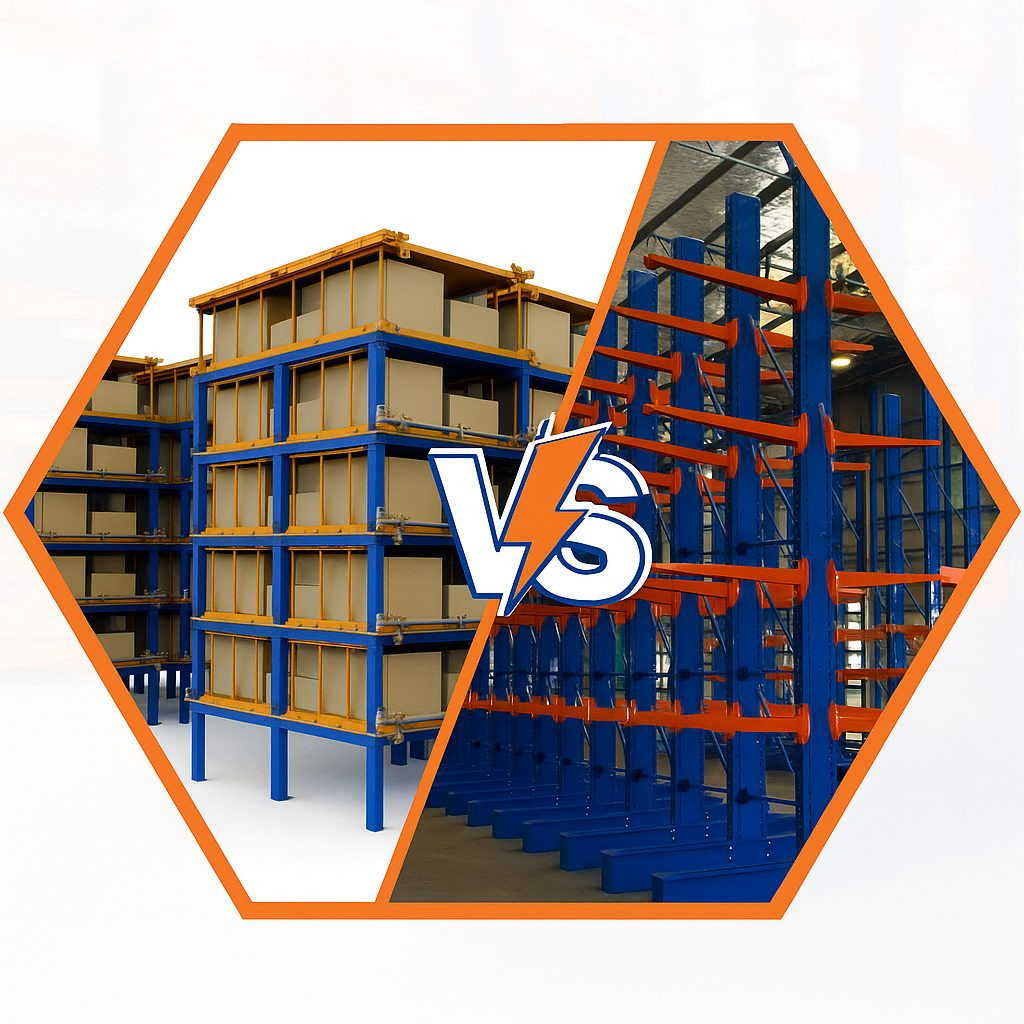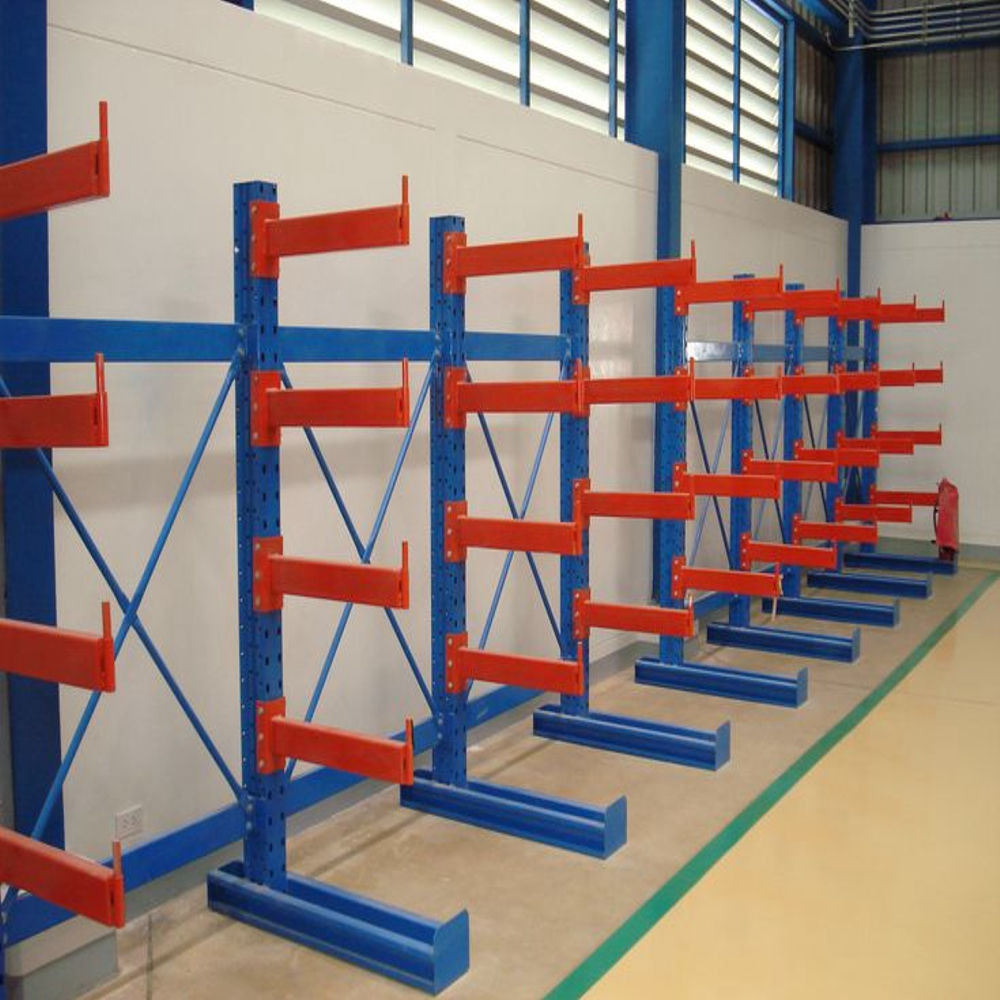Efficient warehouse operations depend heavily on how products are stored, accessed, and transported. When dealing with long loads stored on cantilevers—such as lumber, steel pipes, furniture, or other oversized materials—traditional warehouse picking strategies often fall short. These loads require careful planning for pick paths, workflow optimization, and material handling equipment selection.
This article explores how to optimize pick paths and improve warehouse workflow when storing long items on cantilever racking systems, with practical strategies, benefits, and considerations to help warehouse managers in the USA maximize productivity and safety.
Understanding Cantilever Storage for Long Loads
Cantilever racks are specifically designed for long, bulky, and irregular loads. Unlike pallet racks, they don’t have vertical uprights in the front, which allows items like pipes, beams, and boards to be loaded and unloaded easily. This makes them the go-to choice for industries such as construction supply, metal fabrication, furniture distribution, and woodworking.
However, storing items on cantilevers introduces challenges:
- Long loads require more space for handling.
- Standard forklifts may not be suitable for picking.
- Travel paths can become inefficient if not properly designed.
- Safety risks increase when employees handle oversized materials in tight spaces.
Why Pick Path Optimization Matters
A pick path is the route warehouse staff or machines take to retrieve items from storage. For warehouses dealing with long items, poor pick path design can cause:
- Excessive travel time.
- Forklift congestion in aisles.
- Damage to products or racks.
- Safety hazards during material handling.
By optimizing pick paths, warehouses can:
- Reduce order picking time by up to 30%.
- Minimize equipment wear and tear.
- Improve overall workflow and throughput.
- Enhance worker safety.
Strategies for Optimizing Pick Paths with Cantilever Storage
1. Map Your Long Load Movement Patterns
Before adjusting workflows, analyze movement patterns of long loads. Identify:
- High-frequency picks (fast-moving SKUs).
- Seasonal demand spikes.
- Bottleneck areas in aisles.
This helps in rearranging cantilever racks so high-demand products are closer to shipping and receiving zones.
2. Use Wide Aisle or Drive-In Access for Long Loads
Unlike pallets, long materials require more turning radius. Designing wide aisles ensures forklifts can safely maneuver without excessive reversing or multi-point turns. For high-volume facilities, a drive-in cantilever racking layout may reduce travel distances.
3. Implement Zone Picking for Oversized Items
Instead of a picker covering the entire warehouse, assign zone picking based on storage areas:
- Long loads in cantilever zones.
- Palletized goods in standard rack zones.
- Small parts in bin storage.
This reduces unnecessary travel and improves specialization for workers handling long loads.
4. Adopt Specialized Material Handling Equipment
Using the wrong equipment is a major cause of inefficiency. Consider:
- Sideloader forklifts for long, bulky items.
- Multi-directional forklifts for tight aisle maneuvering.
- Overhead cranes or lift assists for very heavy loads.
Investing in the right equipment reduces travel time and improves safety.
5. Optimize Pick Sequences with Warehouse Management Systems (WMS)
Modern warehouse management systems can create optimized pick paths by sequencing picks in logical order. When paired with cantilever storage layouts, WMS can:
- Direct pickers to minimize backtracking.
- Assign tasks based on equipment type.
- Balance workload across employees.
6. Store Long Loads by Popularity & Dimensions
Not all long loads are equal. Place fast-moving items on the most accessible arms of the cantilever rack. Bulkier or slower-moving loads can be stored higher or farther back.
By aligning storage with demand frequency, workers avoid unnecessary travel and reduce congestion.
7. Improve Visibility & Labeling for Long Loads
Picking errors increase when workers can’t easily identify long loads. Use:
- Large-format labels on cantilever arms.
- Color-coded zones for different product categories.
- Digital picking aids (like handheld scanners or voice picking).
Clear labeling reduces search time and supports faster picks.
8. Consider Flow-Through Cantilever Design for Cross-Docking
For warehouses handling high-volume long materials, a flow-through cantilever design can reduce handling. Place racks so items are loaded from one side (receiving) and picked from the other (shipping). This minimizes travel distances and eliminates unnecessary touches.
Safety Considerations for Long Load Picking
Safety should never be sacrificed for speed. When optimizing pick paths for cantilever-stored loads, remember to:
- Train workers in handling oversized materials.
- Maintain OSHA-compliant aisle widths.
- Inspect racks regularly for damage.
- Use load stops or safety pins to prevent items from rolling off.
An optimized workflow balances speed, safety, and storage efficiency.
Benefits of Optimizing Pick Paths for Cantilever Loads
Warehouses that adopt these strategies typically see:
- Increased productivity (more picks per hour).
- Reduced labor costs due to less wasted travel.
- Fewer accidents from mishandling long loads.
- Higher storage density when racks are designed with workflow in mind.
- Improved customer satisfaction due to faster order fulfillment.
FAQs on Optimizing Pick Paths & Workflow with Cantilever Racking
1. What is the best way to design a pick path for long loads?
The best way is to map product demand, place high-frequency items near shipping areas, and use wide aisle layouts or sideloader forklifts to minimize travel and improve safety.
2. Which material handling equipment is best for cantilever racks?
Sideloader forklifts and multi-directional forklifts are ideal, as they can safely transport long items without needing excessive turning space.
3. How do warehouse management systems help with long load picking?
A WMS can optimize pick sequences, guide operators through efficient routes, and prevent unnecessary backtracking, saving both time and labor costs.
4. Can I use zone picking with cantilever racks?
Yes. Zone picking is effective when separating long loads, pallets, and small parts into different areas. This prevents congestion and reduces picker travel distance.
5. What aisle width is recommended for long load storage?
The recommended aisle width depends on equipment type. For sideloader forklifts, narrower aisles are possible, but for standard forklifts, wide aisles (12–16 feet) are often required.
6. How can I prevent accidents when storing long materials on cantilever racks?
Implement rack safety inspections, use load stops, and ensure employees receive proper training for handling long loads.
7. Is it possible to combine cantilever racks with pallet racks in the same warehouse?
Yes. Many warehouses use hybrid storage solutions—cantilevers for long items and pallet racks for standard goods—while optimizing pick paths across both systems.
8. How do optimized pick paths reduce costs?
They reduce wasted travel time, improve labor efficiency, minimize equipment wear, and decrease the risk of product damage, all leading to lower operating costs.
Conclusion
Handling long loads on cantilever racking systems requires more than just proper storage—it demands a thoughtful approach to pick path optimization and workflow design. By implementing wide aisles, zone picking, specialized forklifts, and WMS-driven pick sequencing, warehouses can significantly improve efficiency, safety, and throughput.











